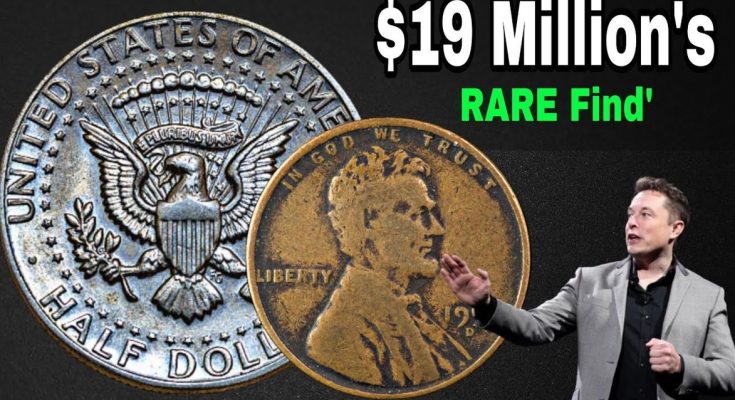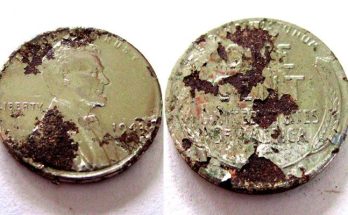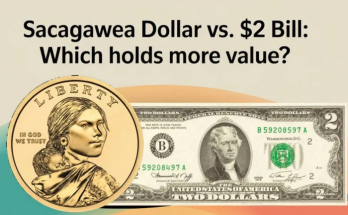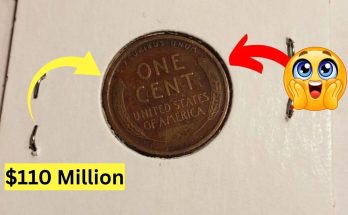The jingle of loose change in your pocket, a forgotten coin jar on the dresser, or an old collection gathering dust might just be a jackpot in disguise. While most circulating currency is worth only its face value, a small number of key date and error coins—particularly the Kennedy Half Dollar and the Lincoln Wheat Penny—possess extraordinary numismatic value that can turn pocket change into a fortune. It’s an exciting treasure hunt, and you don’t need a map; you just need to know what to look for, as certain rare examples have sold for hundreds of thousands, and even millions, of dollars at auction.
The Silver Lure of the Kennedy Half Dollar
The Kennedy Half Dollar series, first minted in 1964 as a tribute to the assassinated President John F. Kennedy, holds a unique place in American numismatics, and its earliest issues are the most valuable due to their precious metal content and historical context. The first and most crucial half dollar to look for is the 1964 Kennedy Half Dollar. This coin is the only year in the series struck for general circulation that contains a 90% silver composition, which gives it an intrinsic bullion value significantly higher than its 50-cent face value. In fact, the strong emotional demand and speculative buying frenzy following Kennedy’s death led to mass hoarding, removing countless 1964 halves from circulation and creating a lasting scarcity. Later issues, from 1965 through 1970, also contain silver, but a reduced amount of 40% silver, making them substantially more valuable than the copper-nickel clad coins minted from 1971 onward.
Beyond their precious metal content, certain varieties and mint errors in the Kennedy Half Dollar series command a massive premium. The most famous variety is the 1964 “Accented Hair” Proof, easily identified by the pronounced hair strands above Kennedy’s ear and a missing lower-left serif on the letter “I” in “LIBERTY”. This design was a short-lived variation that was modified quickly, making the “Accented Hair” version highly coveted and often valued at $150 up to $2,000 or more for ultra-high-quality examples. Other incredibly valuable finds include coins with Doubled Die Obverse (DDO) errors, especially on the words “WE TRUST” or “LIBERTY”. Furthermore, any severe minting errors—such as off-center strikes, rotated dies, or errors involving missing designer initials—can dramatically increase a Kennedy Half Dollar’s worth, with auction prices sometimes soaring to five or even six figures. The extremely rare 1964 Special Mint Set (SMS) coins, of which fewer than 20 are known to exist, are among the most valuable, having sold for over $40,000.
The Penny That Could Be Worth Millions: The Wheat Cent
While a penny might seem like the last place to look for a windfall, the Lincoln Wheat Cent series (minted 1909–1958) contains some of the most famous and valuable error coins in U.S. history. The one coin that sits at the pinnacle of error-coin value is the 1943 Copper (or Bronze) Wheat Penny. During World War II, the U.S. Mint switched to zinc-coated steel to conserve copper for the war effort, making the 1943 pennies appear silver-colored. However, a tiny number of copper planchets from 1942 were mistakenly used in 1943, creating an extreme rarity. Fewer than 20 authentic examples are known across all mints, and one single 1943-D (Denver Mint) copper penny set a record by selling for an astonishing $1.7 million at auction in 2010, while others have consistently fetched hundreds of thousands of dollars.
Other Wheat Cents that should send a collector’s heart racing include:
- The 1955 Doubled Die penny, famous for a clear, dramatic doubling of the date and lettering, with values ranging from $1,000 to over $20,000.
- The 1909-S VDB coin, the first year of the Lincoln Cent featuring designer Victor D. Brenner’s initials (VDB), which is highly sought-after due to its low mintage.
- The 1922 “No D” penny, which is a Denver-minted coin that mistakenly lacks its “D” mintmark, an error that can be valued between $500 and $2,500.
- The extremely rare 1944 Steel Penny, another wartime error, which was struck on leftover steel planchets from 1943 and can be worth over $75,000.
Your Pocket Could Be Your Vault
The stories of a life-changing coin find are real, and they highlight the potential wealth hiding in plain sight. If you encounter a 1964 Kennedy Half Dollar, its silver content alone makes it a valuable find. If you find a 1943 penny, immediately perform the magnet test: a genuine 1943 copper penny will not be magnetic, whereas the common steel cent will stick to a magnet. An authentic 1943 copper cent should also weigh approximately 3.11 grams, while the common steel cent weighs only about 2.7 grams. For any coin suspected of being a major error or key variety, having it authenticated and professionally graded is an essential step to realize its maximum value. So, the next time you empty your pockets, remember: an ordinary coin’s appearance can mask an extraordinary and potentially life-changing numismatic fortune.



